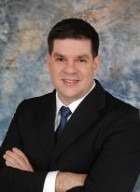Companies Support Government Fleet Renewal Program

Gerdau, Vamos and Volkswagen Caminhões have formed a partnership to support the national fleet renewal program, aimed at removing from roads vehicles more than 20 years old.
The fleet renewal program provides for the purchase of low emission and more efficient vehicles by self-employed drivers and other operations. Under the plan, 140 acquired vehicles were sent to Gerdau’s headquarters in Araçariguama, which is responsible for their destruction and recycling.
At the same time, an extension for the incentives program of up to 1 Billion Reais, (US$ 200 M) was announced.
Source: G1 Read The Article
PSR Analysis: The total of resources and mechanisms to allow the access to the resources still are not sufficient for the program to impact the market significantly. However, the small inroads demonstrate the desire of Government and private entities to make changes and should impact the market going forward. More deployments and adjustments in the program should come in the medium term. We will keep monitoring and adjusting our short-medium term forecast as it progresses. PSR
Fabio Ferraresi is Director-Business Development South America for Power Systems Research




